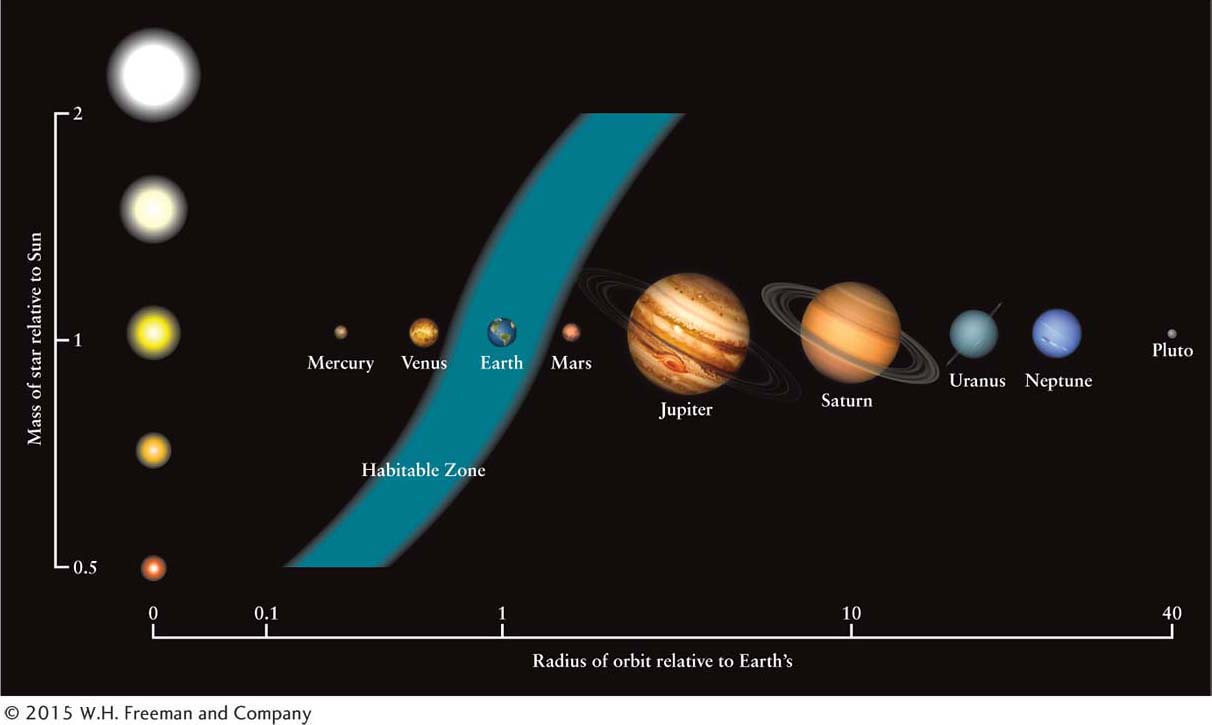5-9 Planets with liquid water are being discovered
 We have started finding Earthlike exoplanets orbiting Sunlike stars. Which of these planets will be the best candidates for supporting life as we know it? We are most likely to discover life (of the sort we are familiar with on Earth) on exoplanets orbiting at about 1 AU from stars similar in mass (within about a factor of 2) to the Sun. At this distance, such stars provide enough heat to keep surface water liquid, and these stars shine long enough for life to evolve. The region around each star where water can be liquid on terrestrial planets in those locations is called the habitable zone or goldilocks zone (Figure 5-
We have started finding Earthlike exoplanets orbiting Sunlike stars. Which of these planets will be the best candidates for supporting life as we know it? We are most likely to discover life (of the sort we are familiar with on Earth) on exoplanets orbiting at about 1 AU from stars similar in mass (within about a factor of 2) to the Sun. At this distance, such stars provide enough heat to keep surface water liquid, and these stars shine long enough for life to evolve. The region around each star where water can be liquid on terrestrial planets in those locations is called the habitable zone or goldilocks zone (Figure 5-

Not all stars have habitable zones of roughly 1 AU, as we have in our solar system. Stars with different masses have different temperatures and they emit different amounts of heat and light. Therefore, stars with different masses have different habitable zones, as shown in Figure 5-
123